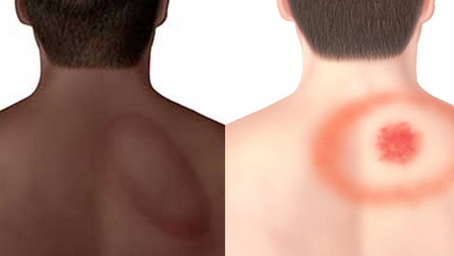
Non-White US Lyme disease patients with Medicaid or Medicare coverage were more likely than their White peers to be female, hospitalized at diagnosis, diagnosed outside of primary care and the summer months, and to have disseminated disease (more widespread in the body), per a new study by Pfizer scientists co-developing a vaccine against the tick-borne infection with Valneva.
From 2016 to 2021, the researchers analyzed claims-based data from 15 Lyme-prevalent states and Washington, DC, on Medicaid beneficiaries 18 years and younger and 19 and older and Medicare fee-for-service beneficiaries younger than 65 and 65 and older.
The findings were published yesterday in Emerging Infectious Diseases.
Highest rates of disseminated disease in Black participants
Medicaid data identified 33,776 infections in children and 30,935 cases in adults. Medicare data identified 12,911 cases in beneficiaries 65 years or younger and 90,913 in older adults. Most infections were in White people (range, 85.0% in adult Medicaid beneficiaries to 96.6% in older Medicare recipients).
Patients with later-stage manifestations are more likely to be hospitalized and to have persistent symptoms after treatment than patients diagnosed with early, localized manifestations.
Lyme disease incidence was highest among White participants of all age and beneficiary groups, followed by Native Americans, with the lowest rates among Black participants. But disseminated disease was more common among non-White participants, especially among both groups of Medicaid recipients (prevalence ratio [PR], 1.77 for younger and 1.57 for older patients).
The highest rates of disseminated disease were in older Black Medicare beneficiaries (42.7%) and pediatric Black Medicaid beneficiaries (39.1%).
Higher rates of disseminated disease among non-White people may be partially due to difficulty recognizing the characteristic rash on darker skin, which can lead to misdiagnosis or delayed or missed diagnoses. "Other factors, including differential risk behaviors and knowledge, likely create and perpetuate the differences in Lyme disease diagnoses," the researchers wrote.
Lyme disease is caused by the bacterium Borrelia burgdorferi, which is transmitted to humans by the bite of infected Ixodes (black-legged or deer) ticks.
"Although all manifestations are treatable with recommended antimicrobial drugs, patients with later-stage manifestations are more likely to be hospitalized and to have persistent symptoms after treatment than patients diagnosed with early, localized manifestations," the authors concluded.
.jpg)








